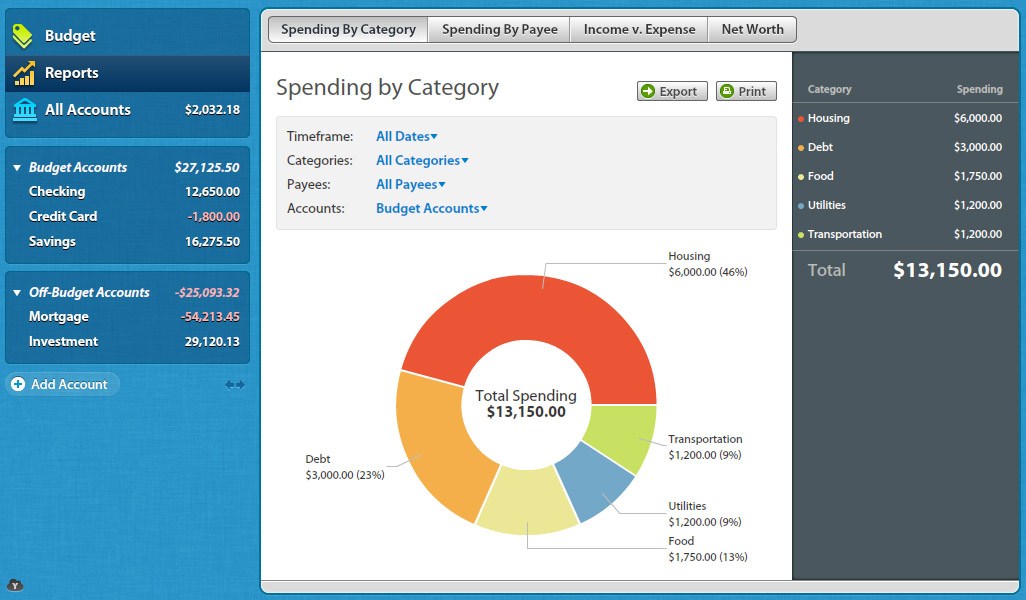

The platform is simple enough for young children to grasp but comprehensive enough for tweens. I personally love PiggyBot because it uses the concept of Spend/Save/Share, which I have used to teach my boys over the years. *Editor’s Note: PiggyBot has been discontinued*
BEST BUDGET APPS THAT LINK TO BANK ACCOUNT FREE
Cost: Free (basic) or $18.99/year for the whole family (Rooster Plus).Saving features: Your child can set specific savings goals and you can even allow your interest earned.Chores and allowance: Assign tasks, track progress, reward your child for meeting goals, and set up recurring or one-off payments for things like allowance.Budgeting features: Account for recurring expenses to help teach your kids budgeting lessons.You can even incentivize saving by setting up personalized interest rates for your kids. Rooster Money allows for a Spend/Save/Give approach while also letting you account for regular expenses (like subscriptions) to teach budgeting skills. The upgraded version, Rooster Plus, covers the whole family for $18.99 a year and tracks everything from chores and tasks to savings goals. Their basic platform (virtual tracker) is free and geared toward kids as young as 3. One of the most comprehensive family finance apps around, Rooster Money is feature-rich and thinks of everything. While many of them are aimed at the 6-12 crowd, only you know which will be best for your child and their financial capabilities. Here’s a look at some of the best money apps we have found for younger kids. The right money app can help guide your kids by tracking their spending, updating their available funds, and allowing you as the parent to keep an eye on where their money goes while teaching them to analyze where their dollars go. These are great lessons for children and adults alike. Learn to live without some of your wants. Spending Responsiblyĭon’t spend what you don’t have. Once they (or you) are ready, you can even open an investment account for them, which will benefit from even more years of growth. Older children can start learning about the value of investing long before they’re ready to build their first portfolio. Whether you simply want your child to set aside a portion of their earnings each month or they want to buy a pricey toy, lessons that involve savings make it easier. Many of these money apps can help drive those lessons home. I regularly work with my 8-year-old to teach him the difference between short- and long-term savings and develop the patience required for each. (Many adults could stand a refresher on that last one, too, if we’re being honest.) Saving
BEST BUDGET APPS THAT LINK TO BANK ACCOUNT HOW TO
This means knowing where they stand financially, what they can afford to spend, planning for big expenses in advance, and learning how to say no.

Whether 6, 16, or 26, it’s important that your children learn how to budget. Some make it easy to automate funds on a weekly or monthly basis while others allow you to assign tasks that your children can check off once complete. Managing Allowance and Choresĭo you want to give your child a regular allowance? What about offering money in exchange for household chores and tasks? However, regardless of how old your children are or how long they’ve been learning about finances, there are a few specific areas of focus to consider when browsing apps. The financial app(s) you choose will vary depending on your child’s age and experience with money. (Personal Capital is now Empower) Key Lessons Now, if you’re considering a money app for your child, teen, or young adult, below are a few of our favorites.

It’s free and has a ton of features to help you get your financial life in order. One of our favorite tools for adults to use to track their finances is Empower. These apps allow parents to pay their children for chores or allowance, track their spending, teach them about saving and budgeting, and even guide them into their first investments.

Parents today have the opportunity to do so much more for their kids’ future, and they have the incredible tools - like money apps and platforms to help them do it. We didn’t have much financial education in school, either, with only a few days dedicated to things like writing a check and calculating interest. Unfortunately, most of these were learned by watching my parents make bad decisions that I was determined not to repeat. I grew up learning many financial lessons from my parents. This content has not been provided by, reviewed, approved or endorsed by any advertiser, unless otherwise noted below. We may receive compensation from the providers of some products mentioned in this article.


 0 kommentar(er)
0 kommentar(er)
